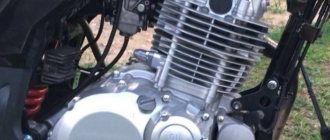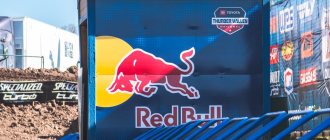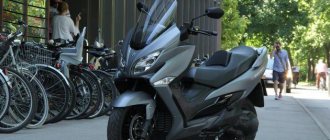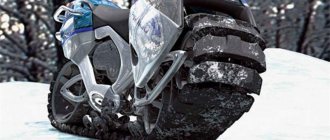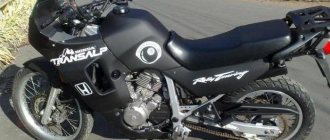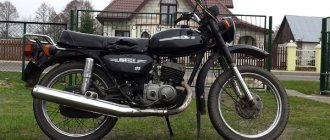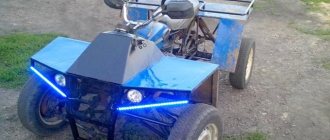Power plants from leading German automotive companies have always been famous for their reliability and unpretentiousness. At the same time, engines from the Volkswagen concern boast high efficiency and solid power, providing the car with no less attractive dynamic characteristics. All these qualities distinguished the BSE, BSF, BCF motors from other competitive units. Partly for this reason, cars with BSE engines are widespread on domestic roads. Owners give preference to the “Germans” not only for a wide range of equipment, which includes a lot of comprehensive equipment and options, but also for the high service life of components and assemblies of key systems.
You can meet cars with a BSE engine installed under the hood literally at every step: these are Passat B6, Volkswagen Golf 6, Touran, Jetta, Skoda Octavia. All these cars, to one degree or another, have become widespread in the post-Soviet space. The parent of BSE is considered to be the Volkswagen concern, which first introduced the unit in 2005. Subsidiary companies, mainly Skoda and Audi, equip their developments with the same installation. In the article we will tell you what the service life of the BSE engine is, highlight the main advantages and disadvantages of the installation, as well as all sorts of problems that the owner of a car with this engine may encounter.
The history of BSE
In 2002, German engineers first introduced the BFQ engine, which was subsequently modernized several times. It was the basis of BFQ that served as the basis for the further development and production of technically advanced units. The motor was designed on the basis of AVU, essentially becoming a continuation and development of an already proven family of engines. If in AVU the cylinder block was completely cast iron, then the design and technological engineering solutions required a different approach at that time. Therefore, the engine was equipped with an aluminum cylinder block and cast iron liners. On top of the block is an aluminum 8-valve head with a single camshaft.
The Germans began creating functional power plants for their subsequent installation on budget models of the VAG group in 2005. This is how BSF and BSE motors, resistant to adverse operating conditions and reliable, appeared, which were equipped with models that were very popular in the countries of the former CIS. The BSE engine also features an 8-valve timing system. Its displacement is 1.6 liters, and its peak power reaches 102 horsepower. In technical terms, it is quite simple, in some ways “primitive”, but what is most important for the domestic car owner is that it is less demanding on the quality of the fuel it fills, which means it can “digest” gasoline of any quality without much difficulty. The first eight-valve BSE was installed on the fifth generation VW Golf in 2005. The car, like the engine itself, exceeded all expectations. Today this is one of the most popular representatives of the golf class of cars not only in Russia, but throughout Europe.
BSE J 5-250 E
A direct comparison shows that this is a motorcycle of a different generation. It has an inverted fork, a water-cooled engine, more modern shapes in the plastic and exhaust, and longer suspension travel. This orange and white motorcycle is much closer to the modern interpretation of the term “sports enduro” than its elderly ancestor.
As is usual in the Celestial Empire, there were some borrowings. The headlight mask and front fender clearly hint that the Chinese designer really likes Austrian off-road motorcycles. It’s good that they didn’t go so far as to directly copy engines and frames - it’s not so easy to apply European developments to Chinese production technologies. Outwardly it will be similar, but problems may arise with the resource. Therefore, we took our own motor, a water-cooled four-valve single-shaft that has proven itself well on the Kayo T6 and Bal t motors Dakar 250. It has a good balance of power and reliability that allows you to enjoy dynamic off-road driving without having to climb inside to rebuild it every third session.
The travel of the suspension, undamaged by time, and the height of the saddle, which is not nailed to the ground by gravity, also match the newer concept. In terms of size, this is a full-fledged men's motorcycle, and not a training desk for beginners and girls.
The seat has a clearly defined step, which even allows us to talk about lumbar support when riding while sitting, but the seat itself is not padded with comfort from the inside - it is a sports one, and according to the designers, you can sit in it only on the liaisons between special stages, and for most of the time you can drive in the rack.
The absence of a side stand also comes from the world of big-time sports. Like a cross-country motorcycle, the BSE comes with a steel triangle, which is inserted into the hollow axle of the rear wheel and serves as a stand, but it’s completely inconvenient to carry it with you through the forest; every time you have to rest, you have to look for something to lean the motorcycle against.
The instrument panel shows engine speed and rpm, a resettable trip odometer, and the number of the selected gear. A pictogram on the screen warns of low gasoline levels in the small 5.2-liter tank.
Design features and characteristics
The BSE cylinder block is also all aluminum with cast iron liners. The cylinder bore is 81 mm, the piston stroke is 77.4 mm, and the compression ratio is 10.5:1. A distinctive feature of the engine is the exhaust gas recirculation system, which has been modernized and redesigned in its own way. If in the power plants that preceded the appearance of BSE, gases contributed to the enrichment of the working mixture by returning to the engine cylinders, then in the new engine the operating principle is structured somewhat differently. At BSE the recirculation system was thoroughly redesigned, but at BSF they decided to abandon it altogether. This decision had a positive impact on reliability, efficiency, and the cost of manufacturing motors.
But reconfiguring the operating principle of the motor had a negative impact on the environmental performance of the engine. BSE environmental standards have dropped to Euro 4 standards, while the smoothness and softness of the power plant have also been compromised. Owners of the VAG car group note that the engine makes strange, frightening sounds, especially for novice drivers, reminiscent of grinding and clicking. The appearance of specific noise during engine operation can be attributed to the specific operation of the installation. But as the system temperature rises to operating levels, all extraneous sounds disappear.
Service regulations and resource BSE 1.6
According to official information from Volkswagen, a total of about 500,000 BSE units have been produced from 2005 to date. Unlike the BSF, this motor still has a partial ventilation system. Due to an additionally installed fan, forced air is supplied, the peculiarity of which is a slight shaking of the engine at low speeds. If you notice a slight vibration in the Skoda Octavia 1.6 or VW Golf 5, there is no need to panic - this is a normal phenomenon for these cars. This is due to the fact that during operation at idle and low speeds, a lean mixture enters the cylinders of the power plant. With a full gas recirculation system, the mixture was further enriched.
According to the manuals of German automakers for servicing the BSE engine, the driver should:
- After every 10 thousand kilometers, completely replace the lubricant in the power plant system. For these purposes, the engine oil recommended by the manufacturer with a viscosity index of 0W-40, 5W-40, 5W-30 is best suited. For a complete and effective replacement, a container of lubricant in a volume of 4.5 liters is enough;
- After 45-60 thousand kilometers, antifreeze and gear oil are changed;
- Regularly inspect the condition of consumables, as well as carry out their comprehensive replacement on time: air and oil filters, cylinder head gaskets should be changed according to the deadlines specified by the manufacturers;
- Periodically carry out comprehensive diagnostics of the most important vehicle systems in order to timely detect even minor faults. After traveling 40-50 thousand km, be sure to inspect the spark plugs; they should work properly, produce a high-quality spark, and there should be no plaque or traces of burning on their surface.
By adhering to simple tips and recommendations, car owners with a BSE engine installed under the hood manage to cover impressive distances. Instances of Skoda and Volkswagen models with such an engine under the hood, and having passed over 500,000 thousand, are not rare, and are found quite often. The manufacturer managed to endow the installation with reliability and a long service life due to the use of simple but effective technologies during the design of the engine. VW is in no hurry to reveal all the secrets, lifting the curtain, so the company does not talk about the actual resource indicator. But the warranty life of BSE is 200 thousand km; if you look at the operating practice of Volkswagen cars, you can safely say that the minimum life of BSE is 400,000 kilometers.
Possible engine malfunctions
This power unit can safely be considered one of the real hard workers, but it is also characterized by some “chronic” diseases and typical malfunctions. The main problem is with fuel injection at idle. The BSE engine is equipped with a distributor fuel injection system; the system itself is durable, but the gas distribution mechanism often fails.
A timing belt is installed as a timing drive, with a service life of 80-100 thousand km. Cases when it breaks are rare and isolated. If the valve belt breaks, the valves bend, so it is better to replace the timing belt after 90 thousand, even if it does not show symptoms of a malfunction. The engine does not detonate and is not prone to overheating, which negatively affects the life of the aluminum cylinder block. In all other respects, it is a fairly reliable engine that pulls well at the low end.
Honda XR250 R
The airborne “Ikser-Chekushka” became a training desk for “millions of rural motorcyclists”; it was through it that they came to conquer off-road terrain and promote the slogan “everyone will ride an enduro.” An unpretentious, attractive and “indestructible” device is able to endure the hardships of off-road hardships for years: operation in brutal conditions, rare washes, even more rare maintenance, replacement of components only after their complete failure, repairs with a hammer, pliers and a screwdriver in the field, regular falls, overturns , flooding and hard contacts with stationary parts of the relief. I think the XR 250 R will definitely take first place in the Most Abused Motorcycle category. “Unkillable” is put in quotes because it is still possible to kill a Honda, nothing lasts forever in this world, but it can also be repaired - spare parts are available, mechanics are familiar with this engine, and there are no difficulties with its resuscitation and complete overhaul.
What does the 14-year-old XR 250 R represent at the moment? Maybe, by the standards of 2001, it would be a stretch to call it a sports enduro, but at the moment it is a soft and plush dual-purpose motorcycle for beginners and girls, with a not very high saddle, a soft engine, low-end traction and good handling. On it you can quietly puke through the forest, without being particularly bothered by the choice of the quality of the coating under the wheels, cross puddles and ruts, climb mountains and even jump over logs lying on the road. It performs well the basic elements of enduro, you just need to make allowances for the low engine power, the inertia in spinning the crankshaft and the fairly large mass of the motorcycle itself.
The ground clearance of 315 mm indicated in the manual does not correspond to reality, because the soft suspensions have sagged greatly over time, because gravity cannot be defeated. The motorcycle seems low, and the distance from the engine to the ground is unusually small. The engine is covered from below with frame pipes and aluminum crankcase protection, so there are no special problems with forcing logs and driving over rocks, but it strikes the protection over the terrain more often than modern sports enduros.
The suspensions themselves are soft and not very energy-intensive; when landing after jumps, they are often completely pierced. The existing adjustments are not enough; the springs need to be changed. There is no compression resistance adjustment, and you can adjust this parameter to suit yourself only by selecting the viscosity of the oil in the fork legs.
The seat is wide and comfortable by sporting standards, which allows you to use the Iksera as a touring motorcycle, even going around the world on it. You just need to find and install a larger gas tank from the Baja version.
A simple route computer can show the distance traveled and the time taken for two routes, as well as the current speed. In principle, there is enough information in the forest.
Driver reviews about engine reliability
A lot has been said about warming up VAG engines, and the topic of conversation did not pass over BSE. According to reviews from car owners, the engine heats up well at idle, but rather slowly. It's all about specifically designed air cooling. However, in 4-5 minutes the unit completely reaches operating temperature, which means you can start driving the car. But it is also worth remembering that the first few kilometers should not overload the installation. Owners of VAG cars will talk in detail about the service life of the BSE engine and all the features of the “heart” of the car.
- Yuri, Tula. I have a 2006 Volkswagen Golf. The mileage to date is already 240 thousand kilometers. The engine is of high quality, torquey, I like the dynamism of the Golf, the car accelerates to hundreds very quickly. And in general, when you press the accelerator pedal, the speed instantly soars and the car rushes at full speed. The only thing I don’t like and is slightly alarming is that after starting, the engine knocks for the first few minutes. Previously there was a distant clattering sound, now it’s just an intrusive, sharp sound. I'm wondering if these are cams or valves? In general, extraneous noise in the operation of this engine is the norm. But it is necessary to distinguish between noises and navigate the situation. Even the car manual says that the engine knocks when “cold”. I fill the oil with EDGE 5W-30, 4.5 liters, change it every 8 thousand. I'll probably have to go for diagnostics.
- Sergey, Perm. Now the speedometer of my Skoda Octavia shows 225 thousand kilometers. I only fill it with EDGE 0W-30, change it about once every 12 thousand, it varies. The engine does not cause any problems; during this time, the timing belt has only been replaced twice. From oil change to oil change, however, you have to add about 300 grams of oil for every thousand kilometers. I haven’t changed the pump, one person is servicing the car at the service center and he says that if it’s working properly, then you don’t have to change it for now, nothing will happen. I trust him, because, in principle, the engine works stably and without interruptions. Sometimes I notice how the knocking becomes more frequent when starting the engine, similar to when faulty hydraulic compensators knock. I went several times for diagnostics, and everywhere they said that the engine and expansion joints were in good working order. So I had to come to terms with it, I just don’t pay attention to extraneous noises. A car with a BSE engine can easily cover 450-500 thousand kilometers.
- Anatoly, Moscow. Hi all! I have a 2007 Volkswagen Caddy, BSE 1.6 engine, mileage 220,000 kilometers. Everyone likes the car: from the spaciousness and comfort of the interior, to acceleration and handling. Over the entire period, I changed the cylinder head gasket and radiator twice after I noticed traces of antifreeze. I also changed the timing belt twice; its lifespan is about 100,000 km, but it’s better to change it earlier, because if it breaks, it will bend the valves. I’ll describe another service, it may be useful to someone: changing the air and fuel filters after 15-20 thousand km does not require using the original repair kit; you can find high-quality analogues. Further, checking the spark plugs every 10,000 km is mandatory; it is better not to “run” them longer than 50,000 km. When replacing the belt, I recommend immediately installing new rollers and a pump - every 100 thousand mileage. Antifreeze and brake fluid according to condition, at least once a year.
- Mikhail, Saratov. I have a 2009 Volkswagen Jetta with 120 thousand kilometers. Just recently the BSE “sore” made itself felt, I don’t even know what could have caused it, because before the engine started up without any extraneous noise. I talked to the mechanics, went for diagnostics, which showed that the engine was like new! During a conversation with owners of similar cars with the same 1.6-liter engine, I found out that the injectors can leak, in rare cases, but with the replacement of the injectors, the clatter at the start disappeared. The knocking noise is caused by a faulty absorber valve, which also cannot be ruled out. I didn’t change the oil, I always used the recommended one, at the service station they also told me that the knocking could be due to gasoline.
- Stanislav, Yekaterinburg. I have never noticed anything like this on my Skoda Octavia 1.6. Today the mileage is 220 thousand km, the engine runs confidently, I change the engine oil every 8-10 thousand km. The only thing is that I once noticed how the car jerks at idle speed of about 500 rpm, this is probably due to the lean working mixture. One experienced auto mechanic advised me to adjust the idle speed by setting the VAG Com minimum speed at 800. It worked. Now the engine runs clean and smooth. Perhaps my experience will be useful to someone. It would be great.
- Ilya, Khabarovsk. From my own experience, I can say that if all the oddities inherent in this engine appear “hot”, you should look for the cause of the malfunction. If it’s “cold”, then it’s okay. When it’s “hot,” it’s most likely the injectors. It’s not for nothing that service stations make mistakes about the quality of gasoline; this can actually happen due to contamination of the injectors with small particles. As a result, they begin to leak because they do not close completely. In this case, there is nothing left to do but change the injectors themselves. I drive a Volkswagen Touran 1.6, the mileage today is 280 thousand kilometers. Diagnostics show that the engine of my car is in excellent condition and is capable of going the same way. Therefore, I am sure that the real resource of BSE is at least 550,000 kilometers.
The BSE engine has a few shortcomings. The manufacturer was forced to deprive it of the gas circulation system in order to reduce the cost of producing the motor. As a result, car enthusiasts have had the opportunity for ten years to acquire a European car with a reliable and resource-intensive power unit. Judging by the reviews of owners of VAG cars, the BSE resource is at least 500 thousand kilometers.
Aces up your sleeve
Jumping from saddle to saddle, you become imbued with love for the fresh “Chinese” and a sense of respect for the elderly “Japanese”, who is not ready to give up his position as the people’s favorite without a fight. Yes, the BSE rides much more fun, it has a more powerful engine, less weight, better handling, more energy-intensive and long-travel suspensions with a wider range of adjustments, and higher ground clearance. On the J 5-250 E you can and want to go fast, while on the XR 250 R you just want to go to get there. Despite the same engine power and torque values indicated in the technical specifications, the BSE is much more willing to lift the front wheel off the ground, allowing you to jump over a hole that suddenly appears on the way only by using the gas, while on the Honda you have to actively use the clutch lever to performing such maneuvers.
After the springboard, the suspension of the Chinese motorcycle works well for landing, while the “Japanese” one breaks through almost until the crankcase hits the ground. In ruts, the XR's low-mounted footpegs begin to catch on the side walls, while the J5's higher ones still stick out from above, leaving more room for maneuver. That is, in all driving parameters, China is ahead, and Japan is behind. But there is one “BUT”. The old samurai slowly and majestically pulls out an ace from his sleeve, which easily beats small Chinese trump cards: the presence of a title and the ability to register a motorcycle. While on the BSE you can only move along forest paths, and even then on a bird’s license, and you may experience big problems when exporting equipment abroad to Russia, on the XR you can safely and legally get to the forest along the road, without fear of running into to an ambush by paunchy guys from the traffic police. This also expands the scope of application of the motorcycle, allowing you to install 50/50 tires, and ride a motorcycle on weekdays to work, and on weekends in nature, albeit in the “light” style without mud and swamps, where such tires will be absolutely useless.
If you want versatility, then “Japanese”. Unpretentious, reliable, not the fastest, but ideal for learning the basics and acquiring skills. If you get tired of it, you’ll sell it in a few years, with almost no loss in price. If you want to be closer to sports, then “Chinese”. Sharper and faster, no reliability problems, but incompatible with public roads. You feel the prospect and growth of skill, then change it to a sports “European” or “Japanese”.
Of course, the BSE J5-250 could be cleared through customs as a motorcycle, fortunately, a full set of lighting devices is present, but this would further increase the cost, reducing the “availability” parameter: the price of under 200 kilo rubles seems humane only against the backdrop of 400+ for the “Japanese” and “Europeans”, but the figure itself is not amazing, unfortunately.
The BSE motorcycle was provided for testing, https://www.velocityk.ru, tel. +7 (499) 922-43-34. Honda motorcycle provided by a private individual. The editors would like to thank the SVR Team enduro school for their assistance in creating the material, https://svrmoto.ru, tel.+7.
Resize > 7 June 2015 10:59 Denis DEAN Panferov

